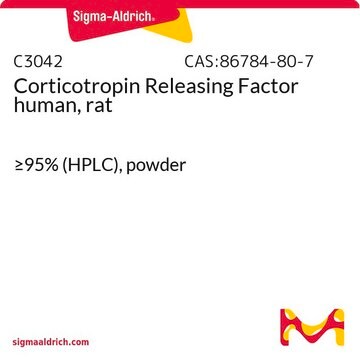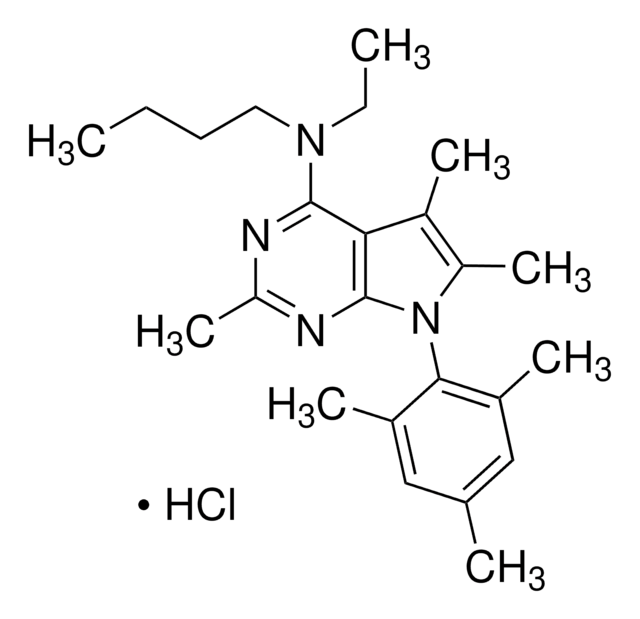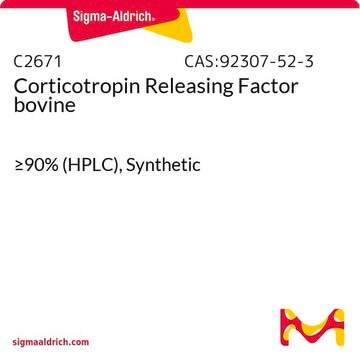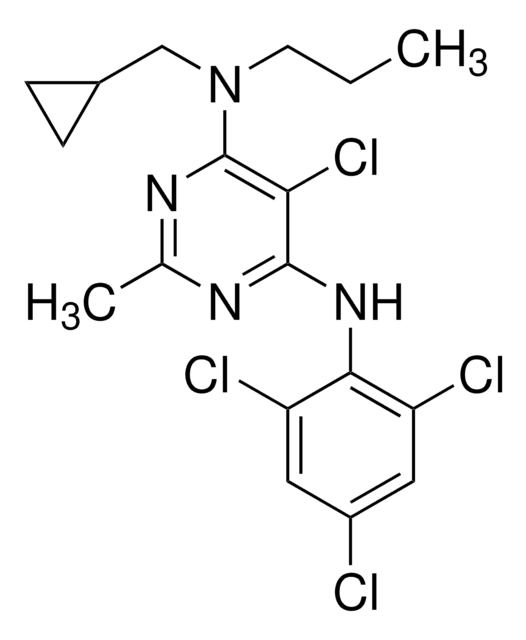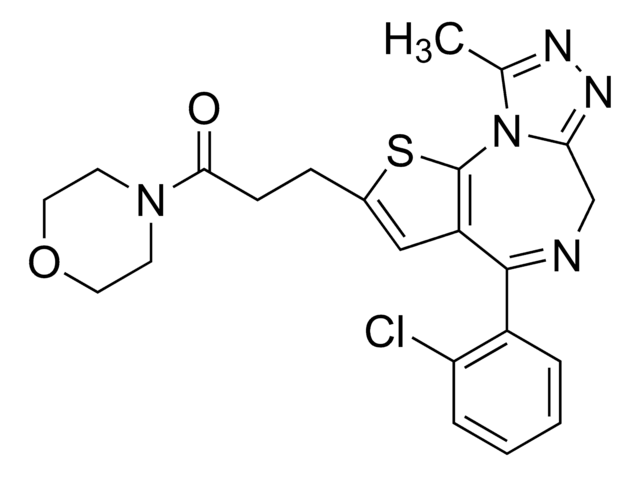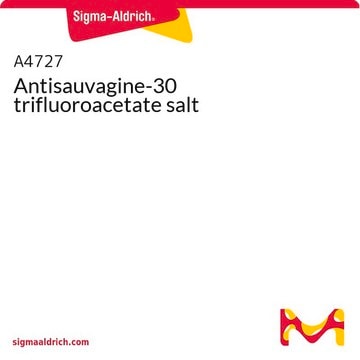推荐产品
正在寻找类似产品? 访问 产品对比指南
Amino Acid Sequence
Asp-Leu-Thr-Phe-His-Leu-Leu-Arg-Glu-Met-Leu-Glu-Met-Ala-Lys-Ala-Glu-Gln-Glu-Ala-Glu-Gln-Ala-Ala-Leu-Asn-Arg-Leu-Leu-Leu-Glu-Glu-Ala-NH2
生化/生理作用
The corticotropin releasing factor (CRF) antagonist α-helical CRF [9-41] exhibits 10-fold higher affinity for rat CRF2α receptors over human CRF2α receptors. It has been used to elucidate the role of CRF in various physiological systems. In colonic epithelium, it abolishes CRF-induced changes in ion secretion, and significantly inhibits CRF-stimulated conductance. It antagonizes the CRF-induced proinflammatory degranulation of perivascular mast cells that are activated in response to acute psychological stress and CRF secretion.
其他說明
Lyophilized from 0.1% TFA in H2O
儲存類別代碼
11 - Combustible Solids
水污染物質分類(WGK)
WGK 3
閃點(°F)
Not applicable
閃點(°C)
Not applicable
個人防護裝備
Eyeshields, Gloves, type N95 (US)
Ricardo Borges Machado et al.
International journal of endocrinology, 2010, 326151-326151 (2010-07-16)
Studies have shown that sleep recovery following different protocols of forced waking varies according to the level of stress inherent to each method. Sleep deprivation activates the hypothalamic-pituitary-adrenal axis and increased corticotropin-releasing hormone (CRH) impairs sleep. The purpose of the
S Y Cheng et al.
Neuroscience, 169(1), 236-245 (2010-04-27)
This study was focused on determining the possible role of corticotropin-releasing hormone (CRH) on play fighting in juvenile golden hamsters. As no specific neural sites have been proposed, we looked for changes in CRH innervations at the peak of play-fighting
我们的科学家团队拥有各种研究领域经验,包括生命科学、材料科学、化学合成、色谱、分析及许多其他领域.
联系技术服务部门